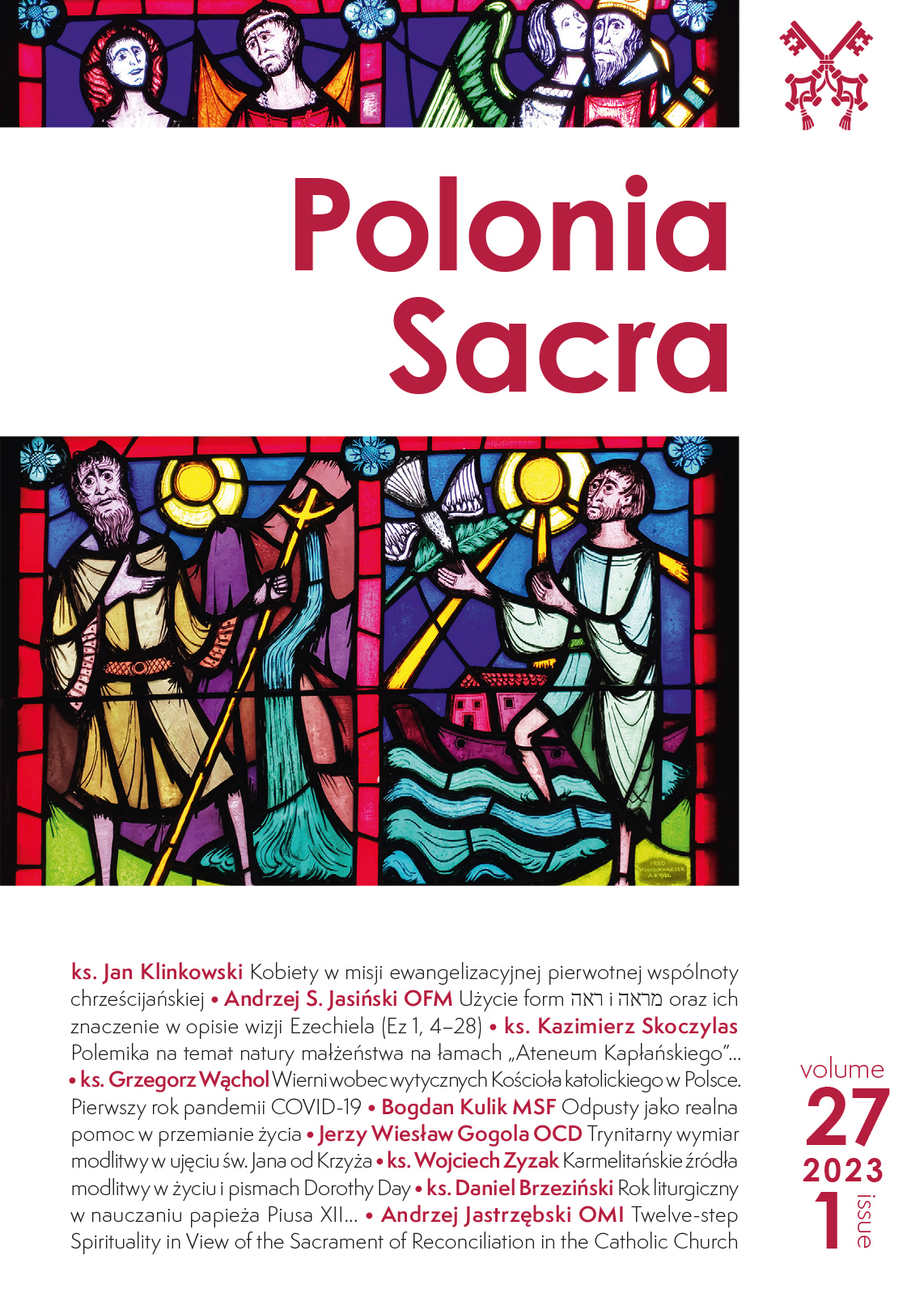Użycie form ראה i מראה oraz ich znaczenie w opisie wizji Ezechiela (Ez 1, 4–28)
The Use of the Forms ראה and מראה and their Significance in the Description of the Ezekiel`s Vision (Ezek 1:4–28)
Author(s): Andrzej Sebastian Jasiński OFMSubject(s): Biblical studies, Systematic Theology
Published by: Wydawnictwo Naukowe Uniwersytetu Papieskiego Jana Pawła II w Krakowie
Keywords: glory of Yahweh; Ezekiel; vision; to see;
Summary/Abstract: The content of the Book of Ezekiel refers to the beginning of the Israel’s Exile to Bab- ylon. Ezekiel was called to be a prophet and watchman of the exiles. The article analyzes the statements containing the forms: ראה and מראה (in the inaugural vision; Ezek 1:4–28). The introduction to the vision and to the entire Book of Ezekiel is the text of Ezek 1:1–3 which contains the phrase: I saw the vision (ו ֶא ְר ֶ ֖אה ַמ ְרא֥וֹת)ָ of God (v. 1b). This phrase introduces the theme of the visions present throughout the entire Book of Ezekiel (Ezek 1:4–28; 8:1–11:25; 40:1–48:35 + 37:1–14). The first vision describes the pres- ence of the glory of Yahweh among the exiles in Babylon. The glory of Yahweh was over the dome supported by a living creature, and the wheels — a chariot. Ezekiel learned that the exiles were not abandoned by Yahweh. Ezekiel’s spiritual experience was initiated by the hand of YHWH upon him (v. 3). It was the power that enabled him to see reality inaccessible to the other exiles. Ezekiel become the servant of the mystery of the Lord’s presence in Babylon (among the golah). This event was the beginning of the renewal process of Israel. Ezekiel become God`s servant, prophet, watchman and priest of the new temple. The consequences of this vision were described by Ezekiel in the later parts of the book.
Journal: Polonia Sacra
- Issue Year: 27/2023
- Issue No: 1
- Page Range: 41-56
- Page Count: 16
- Language: Polish

